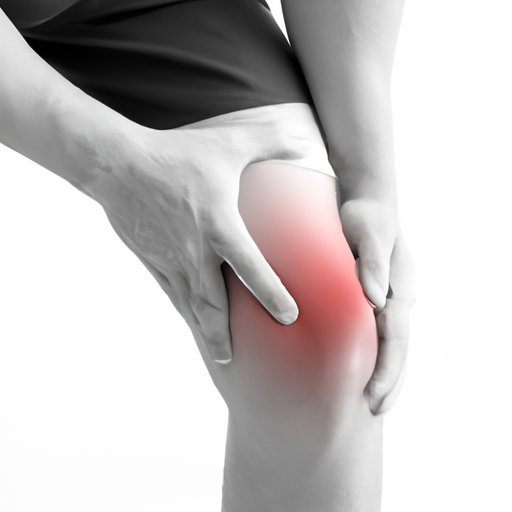
Can You Tear Your ACL Without Knowing?
The anterior cruciate ligament, or ACL, is one of the four primary ligaments in the knee joint. It connects the femur bone (thigh bone) to the tibia bone (shin bone) and plays a crucial role in stabilizing the knee during physical activities such as running, jumping, and cutting movements. However, tearing your ACL can be a painful and life-changing injury that can happen in an instant. In this article, we will explore the possibility of tearing your ACL without realizing it, its symptoms, causes, prevention tips, physical therapy, surgery, and risk factors.
Informative
Symptoms of a torn ACL can include a popping sensation, severe pain, swelling, instability in the knee, and the inability to bear weight. ACL injuries can impact your daily activities such as work, sports, and even walking. An untreated ACL injury can lead to further damage to other parts of the knee joint, such as the meniscus or articular cartilage, causing long-term complications.
It is possible to tear your ACL without knowing, especially if you are involved in sports, fitness or heavy lifting activities. Sometimes an ACL injury can occur without a traumatic event, which can make it challenging to identify. If you suspect there is something wrong with your knee, it is essential to seek medical attention as soon as possible. Getting a proper diagnosis and treatment can prevent further damage to your knee and improve your chances of a speedy recovery.
The common causes of ACL tears include direct trauma to the knee, such as a knee-to-knee collision, landing awkwardly from a jump, or hyperextension of the knee joint. These events can cause the knee to extend or rotate suddenly, putting stress on the ACL, leading to a tear. ACL injuries can also occur without direct trauma, such as from repetitive stress, overuse, or a sudden change in direction.
Personal Story
I had no idea that I had torn my ACL until an MRI scan several weeks later. I had gone skiing, and my knee had buckled on the slopes, but there was no significant pain or swelling at the time, so I assumed it was just a minor sprain. However, my knee continued to feel unstable, and I had to avoid certain activities or movements. I decided to see a doctor, and after the scan, I was shocked to discover that I had a full tear in my ACL. It was a long road to recovery, but with physical therapy and dedication, I was able to regain strength in my knee and resume my active lifestyle.
Prevention Tips
To prevent ACL tears, it is essential to take proactive measures such as proper conditioning, warm-up exercises, and wearing appropriate footwear. Conditioning your body through a consistent exercise regimen can improve your overall health, fitness, and reduce the risk of injury. Warm-up exercises such as dynamic stretching, lunges, or squats can help prepare your joints and muscles for physical activities. Wearing proper footwear can also provide the necessary support and cushioning, reducing stress on your joints and ligaments.
Early warning signs that might indicate an ACL tear include instability in the knee, swelling, pain, or difficulty bearing weight on the affected leg. If you experience any of these symptoms, it is crucial to see a medical professional right away.
Physical Therapy
Physical therapy plays a vital role in recovering from a torn ACL. It involves a combination of exercises and treatments designed to strengthen the muscles around the knee, improve range of motion, and reduce swelling. Some common exercises used in ACL rehabilitation include quad sets, straight leg raises, hamstring curls, and leg presses. Physical therapy sessions can range from several weeks to several months, depending on the severity of the injury and your progress.
Surgery
In some cases, surgery may be necessary to repair a torn ACL, especially if the tear is severe or other parts of the knee are also damaged. Surgery usually involves replacing the torn ACL with a graft, which can come from your own body or a donor. Recovery time can take several months, and rehabilitation may take up to a year. Potential risks and complications associated with surgery include infection, bleeding, or nerve damage. It is critical to discuss the benefits and risks of surgery with your doctor before making a decision.
Risk Factors
Several risk factors can increase the chances of tearing your ACL without knowing. Some examples include participating in high-risk sports such as soccer, basketball, or football. Women are also more susceptible to ACL tears than men, due to differences in anatomy and mechanics. Other factors that can increase your risk of ACL injuries include a previous injury to the knee joint, poor conditioning, and genetics.
If you are at an increased risk of tearing your ACL, taking preventative measures such as conditioning, proper warm-up exercises, and wearing appropriate footwear can help lower your risk. Additionally, being aware of your body and any warning signs of ACL injury can enable early diagnosis and treatment, leading to a better prognosis.
Conclusion
Tearing your ACL can be a painful and life-changing injury, but it is possible to recover if you seek proper medical attention and take an active role in the rehabilitation process. By following preventative measures such as conditioning, warm-up exercises, and wearing appropriate footwear, you can reduce your risk of ACL injuries. Early diagnosis and treatment are critical, so it is essential to pay attention to your body and any warning signs of injury. If you suspect you may have torn your ACL, do not hesitate to seek medical attention, as it can lead to a faster and more successful recovery.





